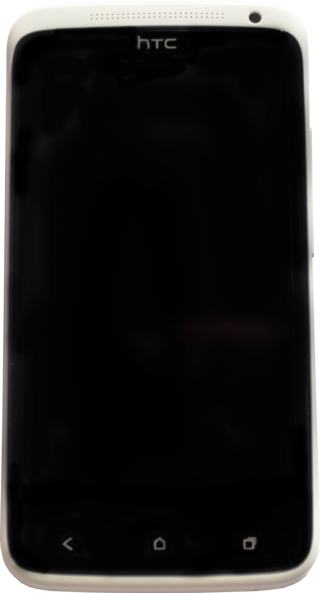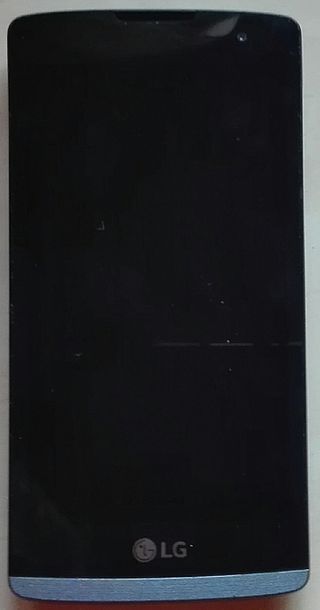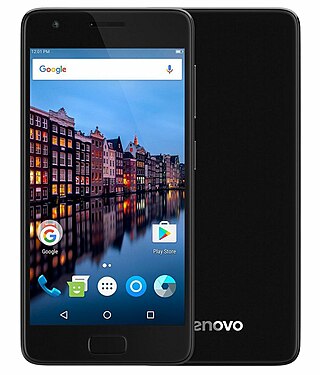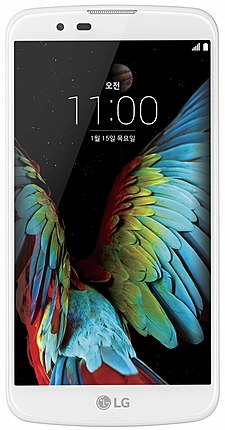Google Nexus is a discontinued line of consumer electronic mobile devices that ran a stock version of the Android operating system. Google managed the design, development, marketing, and support of these devices, but some development and all manufacturing were carried out by partnering with original equipment manufacturers (OEMs). Alongside the main smartphone products, the line also included tablet computers and streaming media players; the Nexus started out in January 2010 and reached its end in October 2016, replaced by Google Pixel family.
Samsung Galaxy Prevail is an Android smartphone with 3.5 inch display, announced on April 5, 2011, for $180. It was the first Samsung Galaxy phone sold by Boost Mobile and is part of the Samsung Galaxy family, although it does not include Samsung's TouchWiz user interface. Its model number is SPH-M820. It was sold exclusively by Boost Mobile. It has 2MP camera, GPS, Bluetooth, WiFi and supports up to 32GB microSD memory cards. It is powered by a Qualcomm 800 MHz MSM7000 chip. It shipped with Android 2.2 Froyo.

The HTC One X is a touchscreen-based, slate-sized smartphone designed and manufactured by HTC. It was released running Android 4.0.3, with the HTC Sense 4.0 skin. The One X is powered by the NVIDIA Tegra 3 for most international GSM carriers, making this the first HTC phone to be equipped with a quad-core processor, while a variant which is LTE capable is powered by the Qualcomm Snapdragon S4 dual-core 1.5 GHz Krait processor. The One X was announced on February 26, 2012, at the Mobile World Congress and was HTC's sixth flagship product, leading the HTC One series from the time of its release through April 2013, when its successor the HTC One (M7) was announced.

The LG Optimus G is a smartphone designed and manufactured by LG Electronics. It was announced on September 19, 2012; On January 18, 2013, LG announced that the device reached 1 million in sales four months after its release in Korea, Japan, Canada, and the U.S. The LG Optimus G is also closely related to the Nexus 4 with similar specifications and a similar design.

The Samsung Galaxy S series is a line of flagship Android high end smartphones and tablet computers produced by Samsung Electronics. In conjunction with the foldable Galaxy Z series, the lineup serves as Samsung's flagship smartphone lineup, and is the high end line of the wider Samsung Galaxy family of Android mobile computing devices.

The second-generation Moto G is an Android smartphone developed by Motorola Mobility. Released on September 6, 2014, it is a successor to the original Moto G released in 2013. The phone was initially aimed at developing markets, although it is also available in developed markets as a lower-cost option compared to other phones in its class.

YU Televentures was an Indian consumer electronics brand, it was incorporated in November 2014 as a joint venture between Cyanogen Inc and Micromax Informatics Limited. Also, YU holds official Cyanogen OS rights in India. In December 2016 the CyanogenMod developer group discontinued the Cyanogen OS. Micromax co-founder Rahul Sharma owns a 99% controlling stake in YU while the remaining 1% is held by two other co-founders, Vikas Jain and Sumeet Arora. Later the YU subbrand of Micromax was discontinued by the brand and the official site redirected to Micromax's official website. YU Televentures was remade on 7 June 2019.

The LG Leon is a smartphone designed and manufactured by LG Electronics. It was announced in February 2015.

The Samsung Galaxy J5 is an Android smartphone produced by Samsung Electronics. It was unveiled and released in June 2015. It has Qualcomm Snapdragon 410 SoC that is backed by 1.5 GB RAM and that has a 64 bit processor, 32bit mode OS.
The Xiaomi Redmi Note Prime is a smartphone released in December 2015 in India, developed by the Chinese company Xiaomi Inc. It is a part of the Redmi Note series of smartphones, and succeeded the Redmi Note 4G. Visually similar to its predecessor, it comes with a 5.5-inch screen, a quad-core 1.2 GHz Qualcomm Snapdragon 410 processor and runs MIUI 7 based on Android 4.4, which can be upgraded to MIUI 9 based on.
The Samsung Galaxy Tab A 8.0 is an Android-based tablet computer produced and marketed by Samsung Electronics. It belongs to the mid-range "A" line, which also includes a 9.7 inch model. It was announced in March 2015, and subsequently released on 1 May 2015. It is available in Wi-Fi–only and Wi-Fi/4G versions.

Samsung Galaxy J5 2016 is an Android-based smartphone produced, developed, released and marketed by Samsung Electronics. It was unveiled and released in April 2016. It has 2 GB LPDDR3 RAM.

The Lenovo Z2 Plus is a smartphone manufactured by Lenovo. It is a part of Lenovo's premium smartphone line in 2017, and has two variants. Lenovo Z2 Plus is the Indian version of Lenovo Zuk Z2, that was launched in China in May, 2016.
The LG V series was a line of high-end Android devices produced by LG Electronics. This series is slated above the LG G series. The first phone in the V series, the LG V10, was unveiled in September 2015, the first smartphone to have the multiples of 10. The last in the series is the LG V60 ThinQ released in March 2020.

LG K10 (2017) is a mid-range Android smartphone developed by LG Electronics and released in February 2017. As the successor to last year's model, the 2017 LG K10 has a number of improvements over its predecessor, such as a fingerprint sensor and a redesigned form factor, along with Android Nougat as the default operating system.

Xiaomi Mi MIX 2 is an Android phablet manufactured by Xiaomi. It was first announced and released in China in September 2017 and later was launched in India at an event in Delhi on 10 October 2017. It is the successor to the Xiaomi Mi MIX. The ceramic body was designed by Philippe Starck.
The LG K series is a line of mid-range smartphones which are designed, developed and marketed by LG Electronics, which run the Android mobile operating system.
Oppo phones are smartphones produced by the partially state-owned Chinese company Oppo, running in several countries.
The Xiaomi Mi MIX 3 is an Android smartphone launched in Beijing on 25 October 2018. It is the successor for the Mi MIX 2 and Mi MIX 2S. This time Xiaomi uses a true bezel-less display with a magnetic sliding front camera setup.














